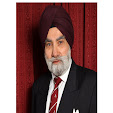The great historoical significance of Rawalsar in the context of the Indian independence must not be forgotten by the Sikhs and the Indian people.

(Vaisakhi 1701: Rawalsar seminar to liberate the country)
(Item published by Sikhchic http://www.sikhchic.com/travel/rawalsar
and Sikhnet http://www.sikhnet.com/news/rawalsar-gurdwara-its-importance )
In his “Mahankosh” (Panjabi encyclopaedia) Bhai Kahn Singh Nabha refers to Rawalsar as the place where Guru Gobind Singh ji addressed the hill rajas (in 1701). From gurdwara and open divaan stages, dhadhis and kavishars (folk singers and poets), including our father Giani Harchand Singh Bassian of Malaya, used to recite Guru Sahib’s revolutionary thunderous challenge to the assembled rajas in “parsang” (ballad) style.
The great historical significance of Rawalsar after Vaisakhi 1699, cannot be overstated.
Perhaps that is the reason why, like the revolutionary significance of Asa ki Vaar, which was heard daily in the villages of Punjab, the message of Rawalsar too has been incrementally forgotten through politically induced amnesia! To my mind Asa ki Vaar was open revolt against Brahmanic practices (the priest), and Rawalsar was revolution against oppression by the rulers (the king). Regrettably, the trend of Indian Sikhi under Hindutva influence, is to move away from the egalitarian independent Sikh thought and to even rewrite Sikh history. Today, many in India would like to believe that no one spoke of independence until the aimless and confused "Indian Mutiny" of 1857.
Bipran biased ritualism, worship and religious politics have taken over Sikh affairs. The “Encyclopaedia of Sikhism” by Patiala University does not even mention Rawalsar! (One senior parbandhak, responsible for Mandi and Rawalsar Gurdwaras was scathing about the attitude of our funding and publicity institutions when we visited the gurdwara.)
Guru Gobind Singh ji’s message of liberation and freedom from tyranny of Moghul rule, fell on the deaf ears of the hill rajas assembled at Rawalsar, about 15 miles from the town of Mandi in Himachal Pardesh. It is not too far north from Anandpur Sahib. That was two years after Vaisakhi 1699, when the Khalsa was revealed as Akal Purakh ki Fauj (Immortal Army of the Timeless).
The morally bankrupt pahari rajas (hill chiefs) were content to continue their lavish and lazy life styles at the expense of the poorest people in the land. Even today, despite massive subsidies by the comparatively less corrupt state government of Himachal Pardesh, and by the central government through various schemes and mega-water diversion and hydro-electricity projects, these hill people continue to scrounge around at subsistence level.
The rajas were content to pay tributes and taxes to the jihadi marauders over the mountains of the north-west frontier; and to present their daughters to the invaders at the border, while pleading with them to be spared. In the meantime, they were continually at each other’s throats. The Guru was often invited to settle their internal petty disputes.
Declaration of Guru ji’s intention to liberate the downtrodden people at Rawalsar in 1701, marked the start of the battles pre-Anandpur siege (May 1705), the great sacrifices including the four Sahibzaada, and 100 years Sikh war against all who stood against the Khalsa objective of establishment of a people’s kingdom, in which “no one inflicted pain on another” – the halemi raj predicted by Guru Arjan Dev ji (Shabad: “Hun Hukam hoa Mehrban da....”.
Commercialised, bipran (Hindutva-Brahamanwadi) politics in India today becomes apparent not only from the condition of some important historical sites like Rawalsar with a powerful Khalsa miri (temporal) message, but also from the poor and highly biased drafting of the information boards at gurdwaras like the one at Rawalsar. The powerful reminder in Punjabi of “Desh noo sadia(n) di gulami to(n) mukt kraon leyee...” i.e. to free the country (Indian subcontinent) from centuries of slavery..., is lost in the English translation; which would be read by visiting non-Sikhs including politicians. Bipran politics takes over!
Yet, gurdwaras with a heavy Bipran ritualism bias like Manikaran (north of Rawalsar) are promoted and thronged by thousands of devout Sikhs each year.
Let us move away from the mythology preaching and pilgrimages of other-worldly Manikaran and Hemkund, to educational historical preservation of places like Rawalsar, virtually taken over as a Budhist pilgrimage centre in recent years. Yet, the Raja of Mandi had allocated many acres of land to the Sikhs to sustain and mark this great Sikh historical site marking the first declaration of independence. That declaration would lead on to the independence of the Indian sub-continent from foreign rule in the 20th century.
If the great contribution of Khalsa towards the independence of the people of the Indian subcontinent is to be made known to the Indian people and the world, then the true story of Rawalsar must be memorialised and told.
Every Sikh should visit Rawalsar and see the divine reflection of Guru Gobind Singh in the lake at Rawalsar. After all, unlike the mythological Hemkund, Guru Sahib did visit the sarovar, and himself saw the reflection of the future of those who would be his own “gareeb Sikhs” leading a people’s revolution as his Khalsa, to become the rulers of the land by the end of the 18th century.

(This is Bipran “Sikhi" today: Thousands of Sikhs visit Manikaran north of Mandi near Rawalsar.)
Sikh Education Welfare & Advancement (SEWA) network
E-mail: sewauk2005@yahoo.co.uk
©Gurmukh Singh
Article may be published with acknowledgement.
